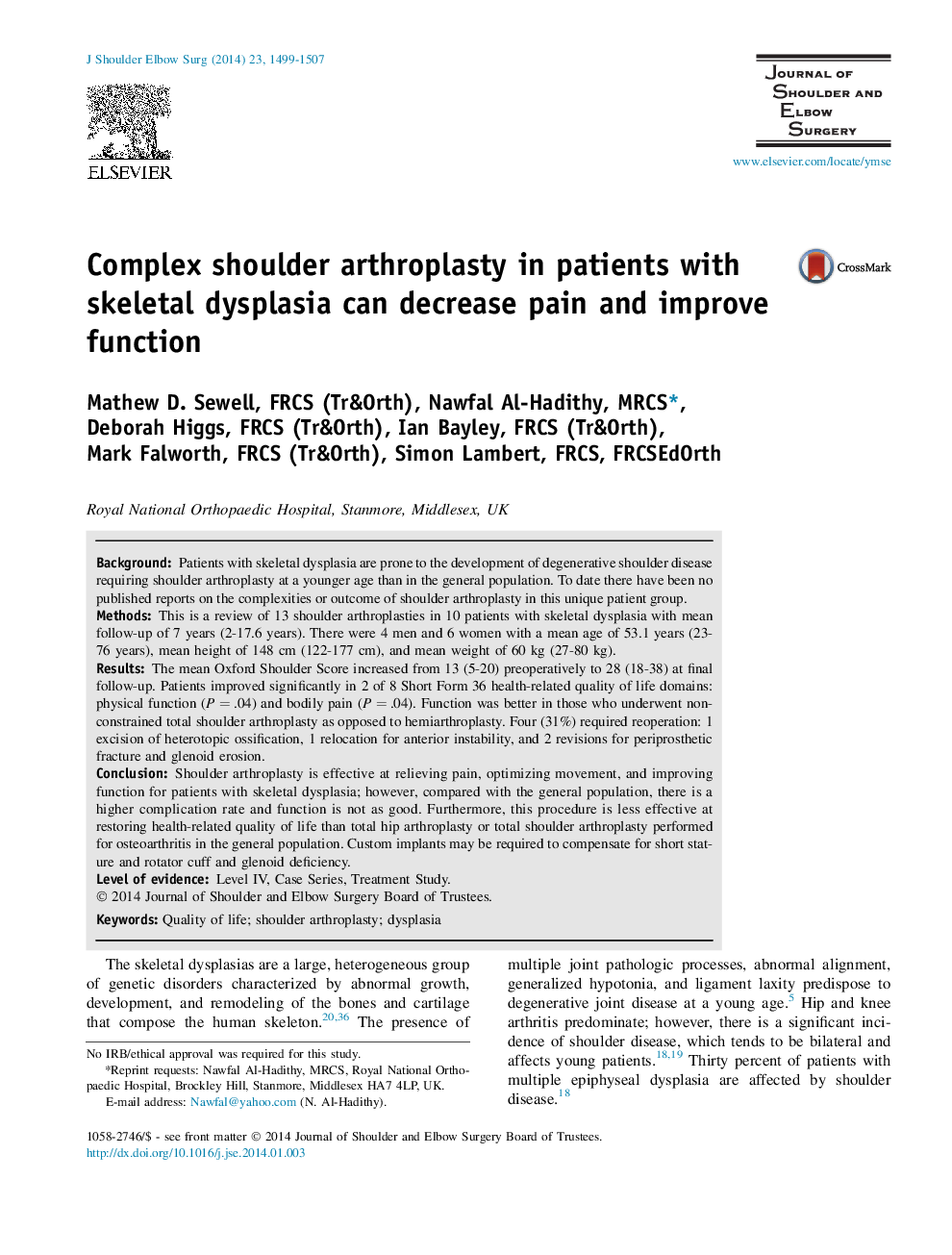| Article ID | Journal | Published Year | Pages | File Type |
|---|---|---|---|---|
| 4073773 | Journal of Shoulder and Elbow Surgery | 2014 | 9 Pages |
BackgroundPatients with skeletal dysplasia are prone to the development of degenerative shoulder disease requiring shoulder arthroplasty at a younger age than in the general population. To date there have been no published reports on the complexities or outcome of shoulder arthroplasty in this unique patient group.MethodsThis is a review of 13 shoulder arthroplasties in 10 patients with skeletal dysplasia with mean follow-up of 7 years (2-17.6 years). There were 4 men and 6 women with a mean age of 53.1 years (23-76 years), mean height of 148 cm (122-177 cm), and mean weight of 60 kg (27-80 kg).ResultsThe mean Oxford Shoulder Score increased from 13 (5-20) preoperatively to 28 (18-38) at final follow-up. Patients improved significantly in 2 of 8 Short Form 36 health-related quality of life domains: physical function (P = .04) and bodily pain (P = .04). Function was better in those who underwent nonconstrained total shoulder arthroplasty as opposed to hemiarthroplasty. Four (31%) required reoperation: 1 excision of heterotopic ossification, 1 relocation for anterior instability, and 2 revisions for periprosthetic fracture and glenoid erosion.ConclusionShoulder arthroplasty is effective at relieving pain, optimizing movement, and improving function for patients with skeletal dysplasia; however, compared with the general population, there is a higher complication rate and function is not as good. Furthermore, this procedure is less effective at restoring health-related quality of life than total hip arthroplasty or total shoulder arthroplasty performed for osteoarthritis in the general population. Custom implants may be required to compensate for short stature and rotator cuff and glenoid deficiency.
